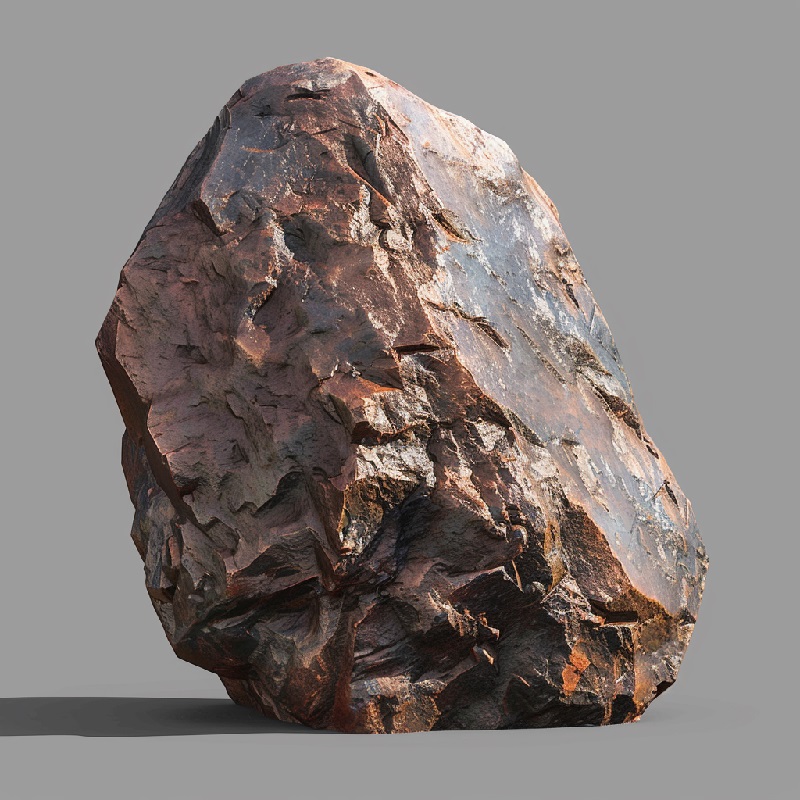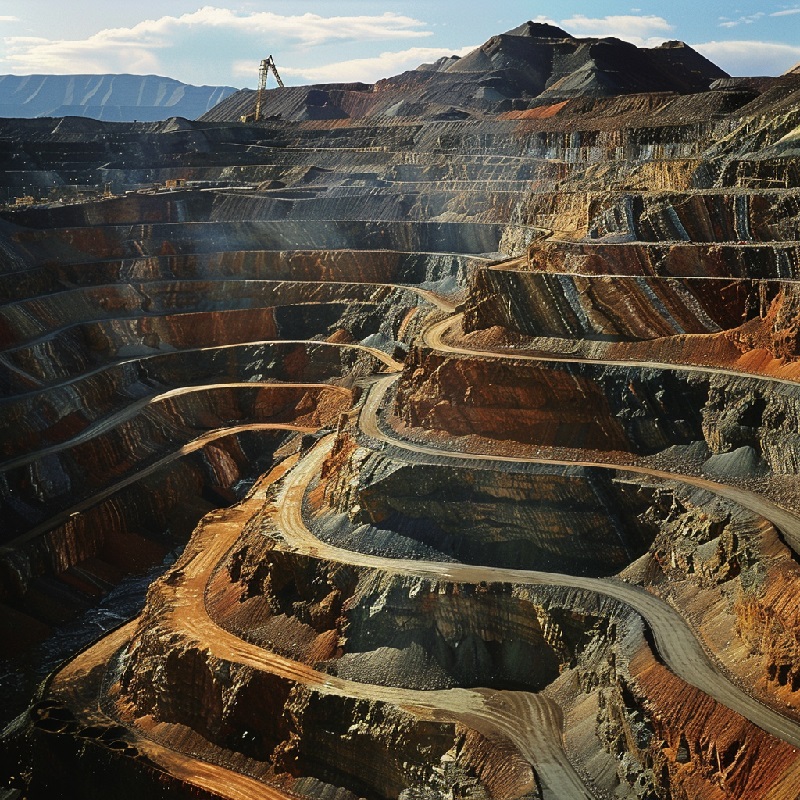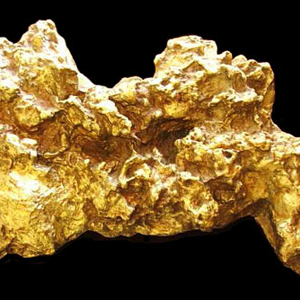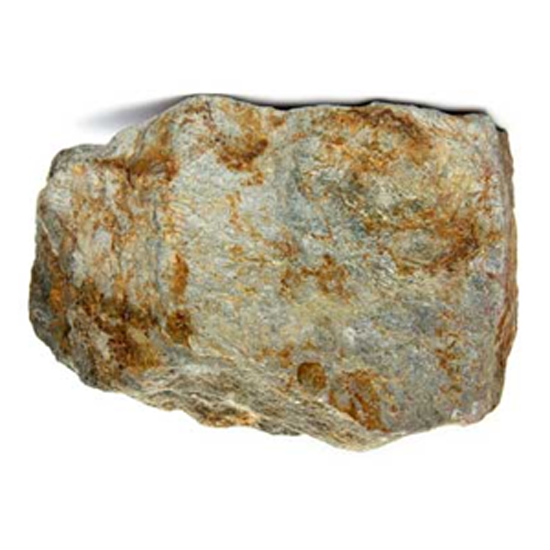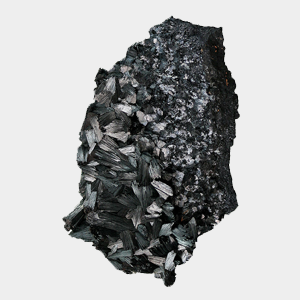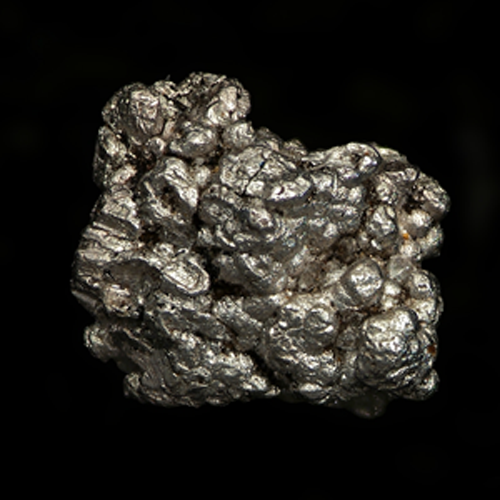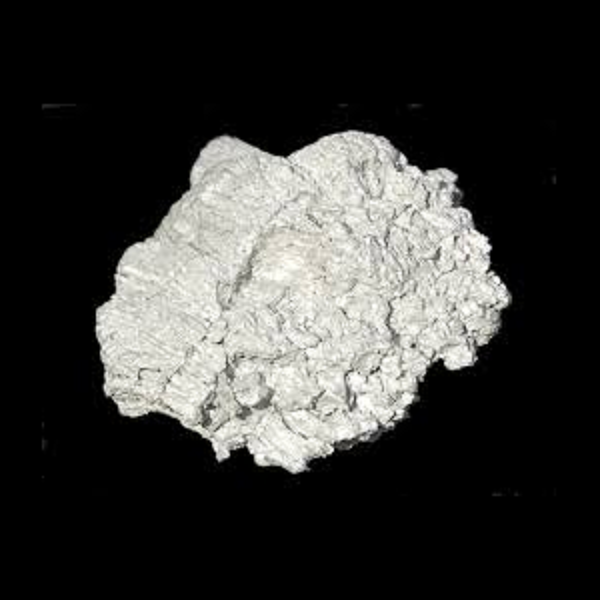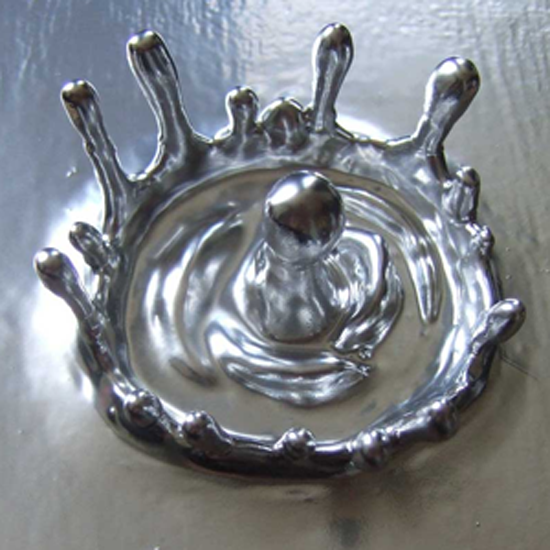Copper Mining
COPPER :
Copper is a chemical element represented by the symbol Cu and with an atomic number of 29. It is a soft metal with excellent electrical conductivity and is somewhat malleable in its pure state, exhibiting a reddish-pink hue, which is unusual for metals typically shiny and white. It finds wide usage as an excellent electrical conductor, thermal conductor, building material, and as an ingredient in a variety of copper products.
Copper is a crucial essential nutrient for all higher plants and animals. In animals, including humans, it is primarily found in the bloodstream, serving as a co-factor in various enzymes, and in numerous copper-based pigments. However, in excessive amounts, copper can be toxic and even lethal to humans.
Copper metal has played a significant role in the history of humankind, as it has been utilized for thousands of years. Several early civilizations have evidence of early copper mining. During the time of the Roman Empire, copper was primarily mined on Cyprus, hence the origin of the metal's name as Cyprium, meaning "metal of Cyprus," later shortened to Cuprum.
Numerous countries, such as Chile and the United States, still have substantial reserves of this ancient metal, which are extracted through large open-pit mines. However, like tin, there may be insufficient reserves to sustain current rates of consumption.
Chemical Symbol:Cu
Atomic Number:29
Atomic Weight: 63.55
Physical Properties:
*Copper is a ductile metal, meaning it can be drawn into thin wires without breaking.
*It is also malleable, which means it can be hammered or pressed into various shapes without cracking.
*Copper has a reddish-orange color when in its pure form and develops a characteristic greenish patina when exposed to air and moisture over time.
*It has excellent thermal and electrical conductivity, making it valuable in electrical and heat transfer applications.
*Copper has a relatively high melting point of 1,984°F (1,085°C) and boiling point of 5,301°F (2,927°C).
COPPER PROCESS :
The concentration of copper in ores averages only 0.6%, and most profitable ores are sulfides, especially chalcopyrite (CuFeS2) and to a lesser extent chalcocite (Cu2S). These minerals are intense from crushed ores to the level of 10 to 15% copper by froth flotation or bioleaching. Heating this material with silica in flash smelting removes much of the iron as slag.
The procedure exploits the better ease of converting iron sulfides into its oxides, which in turn react with the silica to form the silicate slag, which floats on top of the heated mass. The resulting copper matte consisting of Cu2S is then roasted to change all sulfides into oxides.
2 Cu2S + 3 O2 ---> 2 Cu2O + 2 SO2
The cuprous oxide is converted to blister copper upon heating:
2 Cu2O ---> 4 Cu + O2
This step exploits the relatively easy reduction of copper oxides to copper metal. Natural gas is blown across the blister to remove most of the residual oxygen and electro refining is performing on the resultant material to produce pure copper.
Cu2+ + 2 e ---> Cu
Copper, like aluminium, is 100% recyclable without any loss of quality whether in a raw state or contained in an artificial product. In volume, copper is the third most recycled metal after iron and aluminium. It is predictable that 80% of the copper ever mined is still in use today. According to the International Resource Panel's Metal Stocks in Society report, the global per capita stock of Copper in use in society is 35 and 55 kg. Much of this is in more-developed countries quite than less-developed country.
The process of recycling copper follows approximately the same steps as is used to extract copper, but requires fewer steps. High purity scrap copper is melted in a furnace and then abridged and cast into billets and ingots; lower cleanliness scrap is refined by electroplating in a bath of sulfuric acid.
Copper is extracted in large amounts from the Earth’s crust by mining of sulphide ores and also oxide ores. Studies reveal about 80% of copper is produced by its extraction from sulphide ores. Chalcopyrite is a certain kind of suphide ore that can be converted to copper by a different method from silicate, carbonate or sulphate ores. Generally, the method used for the extraction of copper from its ores depends on the nature of the ore.
HOW IS COPPER OBTAINED?
Copper is primarily obtained through mining and processing of copper ores. Here's an overview of the process:
1.Exploration: Geologists identify potential copper deposits through various exploration techniques, including geological mapping, geophysical surveys, and drilling. This helps locate areas with concentrations of copper minerals.
2.Mining: Once a promising deposit is identified, mining operations begin. There are several methods of mining copper ore, including open-pit mining, underground mining, and in-situ leaching, depending on the depth, size, and location of the deposit.
3.Crushing and Grinding: Once the copper ore is extracted from the ground, it is crushed into smaller pieces and then ground into a fine powder. This increases the surface area of the ore, facilitating the subsequent extraction process.
4.Concentration: Copper ores are typically composed of copper sulfide minerals such as chalcopyrite or copper oxide minerals such as malachite. The crushed and ground ore is then concentrated using various techniques such as froth flotation, gravity separation, or magnetic separation. These methods separate the copper minerals from the gangue (unwanted material), producing a concentrate with a high copper content.
5.Smelting: The concentrated copper ore is then subjected to smelting, a process in which it is heated in a furnace with a reducing agent such as coke (carbon) and fluxes such as limestone. This causes the copper minerals to react with the reducing agent, producing molten copper matte, a mixture of copper sulfides and impurities.
6.Refining: The molten copper matte undergoes further refining processes to remove impurities and improve the copper purity. This may involve processes such as converting, electrorefining, or fire refining, depending on the desired purity and final product specifications.
7.Casting: The refined copper is then cast into various shapes such as ingots, billets, or rods, depending on its intended use. These copper products can be further processed into finished goods such as wires, tubes, sheets, and pipes for use in various industries.
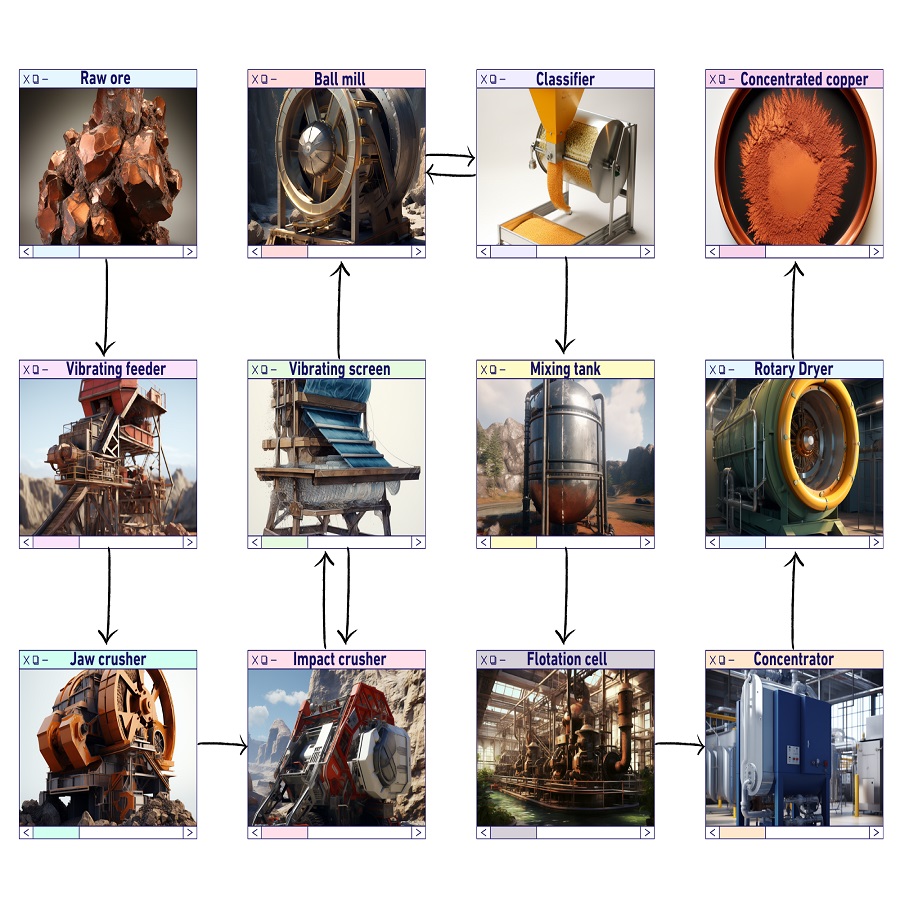
PROCESSING OF OXIDE ORE :
Oxide ores are generally processed using hydrometallurgy. Liquid solutions are used in these processes to extract and purify copper from copper oxide ores at ordinary temperatures, in three major steps: 1) heap leaching -to leach out metals, 2) solvent extraction- to separate the liquids, and 3) electrowinning- which is a type of electrolysis helps in producing about 99.99% pure copper.

1. Heap Leaching :
The first step is the Heap Leaching process, which involves allowing filtering chemical solutions to leach out metals. It is commonly used for low-grade ore, which is not economical enough to be sent through a milling process. Once the mining and transporting are done, the ore is crushed to a consistent gravel or golf ball size, and the crushed ore is piled into a heap on top of an impenetrable layer, on a slight slope. The leaching reagent, dilute sulfuric acid, is sprayed through sprinklers on top of the heap pile and allowed to trickle down through the heap, dissolving the copper from the ore. The outcome is a "pregnant" leach solution of sulfuric acid and copper sulfate collected in a small pool, with the copper compound present in concentrations of 60-70%.
2. Solvent Extraction :
The solvent extraction process involves allowing two immiscible liquids to be stirred and separated, causing the copper to move from one liquid to the other. The pregnant leach solution is strongly mixed with a solvent, causing the copper to migrate from the leach solution into the solvent. The two liquids then separate based on solubility, with copper remaining in the solvent solution and impurities left in the leach solution.
3. Electrowinning :
The final step is electrowinning. In this process, an electrical current is passed through an inert anode (positive electrode) and through the copper solution obtained previously, which acts as an electrolyte. The cations come out of the solution after which they are plated onto a cathode (negative electrode) as 99.99% pure copper.
PROCESSING OF SULPHIDE ORE:
The sulfide ores are usually processed using the method of pyrometallurgy a process of extraction and purification of metals which involves the application of heat in four major steps: 1) froth flotation to separate the copper minerals from the gangue, 2) thickening stage results in a combination of 30% copper and other metals, 3) smelting stage further produces some impurities and a combination of copper with other metals, and 4) electrolysis gives way for finished copper cathodes which can be made into wires, plates, tubes, and other copper products.
1. Froth Flotation :
Once the process of mining, transporting, and crushing the ore to a golf-sized ball is accomplished, it is further processed and reduced to pebbles and then to sand like particles. It is then added with liquid to make it a slurry which is a combination of valuable copper ore minerals and “worthless” rock, called gangue. The froth floatation process is executed to separate the copper minerals from the gangue. Collectors which are chemical reagents are added to the slurry which bind to the copper particles, making them waterproof. With the usage of pipes air is blown into the solution to create bubbles rising up along with the copper sulfide particles as froth of copper-rich bubbles. This froth is then skimmed off whereas the gangue at the bottom is disposed off.
2. Thickening :
The froth which is skimmed is poured into large tanks called thickeners. In the thickening process, the bubbles break and solids from the froth solution settle at the bottom of the tank. Filtration is carried to remove excess water from the solids and the final product of this stage is a mixture of 30% copper and other metals and this copper concentrate is then sent to the smelter.
3. Smelting :
The copper concentrate obtained in the previous step is sent through the smelting furnace and heated up to 2,300°F and converted into molten liquid which is is poured into a slag-settling furnace. A combination of matte including a mixture of copper, sulfur and iron, along with other metals impurities is produced. The copper matte generated by the smelting furnace contains 58-60% copper. The molten matte is taken to another furnace called a converter to have the remaining iron and sulfur burned off. This product is referred to as blister copper, which contains 98% copper, and taken to the anode smelter. The yellow color of the blister copper turns bluish green when the oxygen in the copper is burned off in the anode smelter. The resultant is molten anode copper which is poured into molds called anode-casting wheels. The cooled anode slabs are 99% pure copper, are found to be copper-colored, have two handles molded on top, and are two inches thick, three feet wide, three-and-a-half feet high, and weigh 750 pounds.
4. Electrolysis :
The final step of electrolysis refines pure copper from the sulfide ores .The copper anode slabs are hung in a large tank of copper sulfate and sulfuric acid solution which acts as the electrolyte. The cathodes are thin sheets of pure copper hung in between the anodes. The electric current is passed, and the cations leave the anode and move through the electrolyte solution to be plated on the cathode whereas the other metals and impurities also leave the anode and settle at the bottom of the electrolytic solution. The finished copper cathodes contain 99.99% pure copper and can be made into wires, plates, tubes, and other copper products.
USES OF COPPER:
Copper is a versatile metal with a wide range of uses across various industries. Some of the primary uses of copper include:
Electrical Wiring and Conductors: Copper is an excellent conductor of electricity, making it indispensable in electrical wiring and conductors. It is used in the construction of power cables, electrical wires, and busbars for transmitting electricity in residential, commercial, and industrial buildings.
Electronics: Copper is used extensively in electronic devices and components due to its excellent conductivity and corrosion resistance. It is used in printed circuit boards (PCBs), connectors, switches, and other electronic components.
Plumbing and Piping:Copper's corrosion resistance and antimicrobial properties make it ideal for use in plumbing and piping systems. It is commonly used in pipes, fittings, valves, and fixtures for carrying water, gas, and other fluids in residential, commercial, and industrial applications.
Heat Exchangers and HVAC Systems:Copper's high thermal conductivity and corrosion resistance make it well-suited for use in heat exchangers, HVAC (heating, ventilation, and air conditioning) systems, and refrigeration equipment. It is used in heat exchanger coils, tubing, and fins for efficient heat transfer.
Roofing and Architecture:Copper is valued for its aesthetic appeal and durability, making it a popular choice for roofing and architectural applications. It is used in roofing materials such as copper shingles, tiles, and standing seam panels, as well as in architectural elements such as domes, spires, and facades.
Cookware and Kitchen Utensils:Copper's excellent heat conductivity and malleability make it ideal for use in cookware and kitchen utensils. It is used in pots, pans, frying pans, and other cooking vessels for even heat distribution and precise temperature control.
Antimicrobial Surfaces: Copper has natural antimicrobial properties that inhibit the growth of bacteria, viruses, and fungi on surfaces. It is used in healthcare facilities, public spaces, and high-touch surfaces such as door handles, handrails, and countertops to reduce the spread of infections.
Currency and Coinage: Copper and copper alloys have been used historically in the minting of coins and currency due to their durability and corrosion resistance. While most modern coins are made of base metals or alloys, some coins still contain significant amounts of copper.
ANNUAL COPPER USAGE:
1.Chile: Chile is the world's largest producer of copper, accounting for a significant portion of global production. The country's rich copper deposits, particularly in the Atacama Desert region, have made it a powerhouse in the copper mining industry. Major copper mining companies in Chile include Codelco, BHP, and Anglo American.
2.China: China is the second-largest producer of copper globally. The country's rapid industrialization and urbanization have driven strong demand for copper, both for domestic consumption and export. Chinese copper producers include Jiangxi Copper, Tongling Nonferrous Metals, and Zijin Mining Group.
3.Peru: Peru is a major copper producer, with significant deposits located in the Andes Mountains. The country's copper mining industry is dominated by companies such as Freeport-McMoRan, Southern Copper Corporation, and Antamina (a joint venture between BHP, Glencore, Teck, and Mitsubishi Corporation).
4.Australia: Australia is a significant producer of copper, with large-scale mining operations in regions such as Queensland and Western Australia. Major copper producers in Australia include BHP, Rio Tinto, and Oz Minerals.
5.United States: The United States is also a notable producer of copper, with mines located primarily in states such as Arizona, Utah, and New Mexico. Major copper mining companies in the U.S. include Freeport-McMoRan, Rio Tinto, and Southern Copper Corporation.
6.Democratic Republic of the Congo (DRC):The DRC is a major producer of copper, primarily from large-scale mining operations in the Katanga region. Companies such as Glencore and China Molybdenum operate copper mines in the DRC.
7.Other Countries:Other countries with significant copper production include Zambia, Russia, Indonesia, and Mexico, among others. These countries contribute to global copper production through large-scale mining operations and exploration projects.
Overall, copper production is driven by factors such as global economic conditions, industrial demand, technological advancements, and geopolitical factors. The industry is characterized by large-scale mining operations, sophisticated extraction and processing techniques, and stringent environmental and safety regulations.
COPPER PRODUCTION IN THE WORLD :
Countries like Chile, Peru and China are the three topmost countries known for the highest production of copper across the world. USA is the fourth largest producer of copper in the world since the largest copper mine is found in Utah. Other major copper mines are found in Australia, Arizona, Michigan, New Mexico and Montana.
Related Mining




